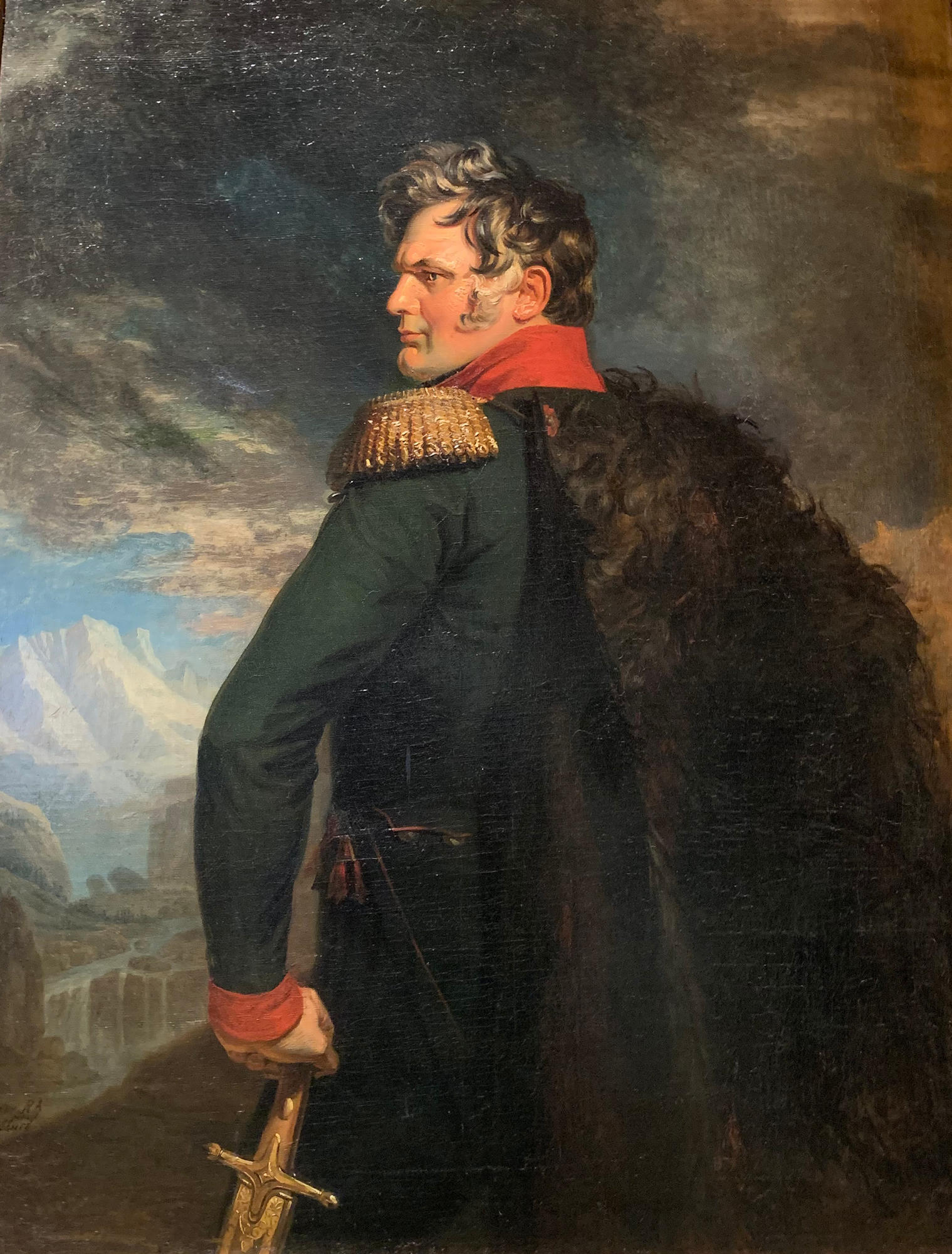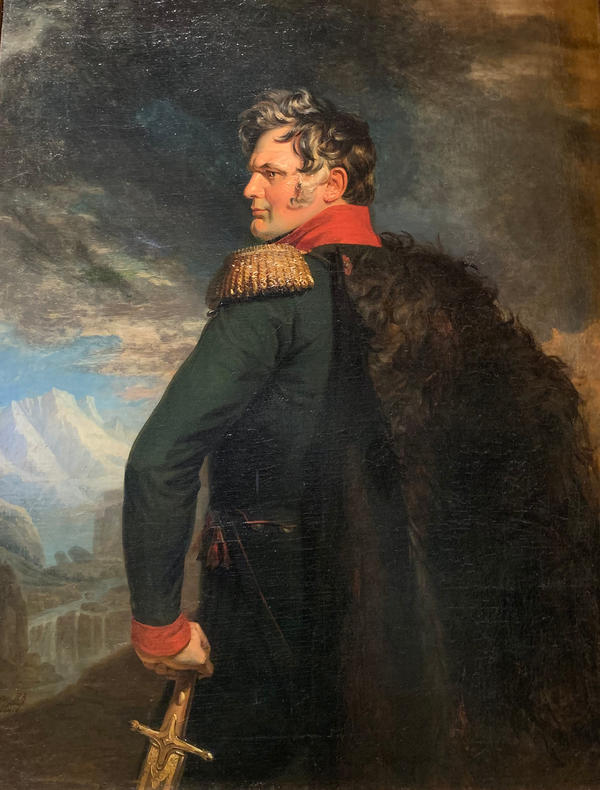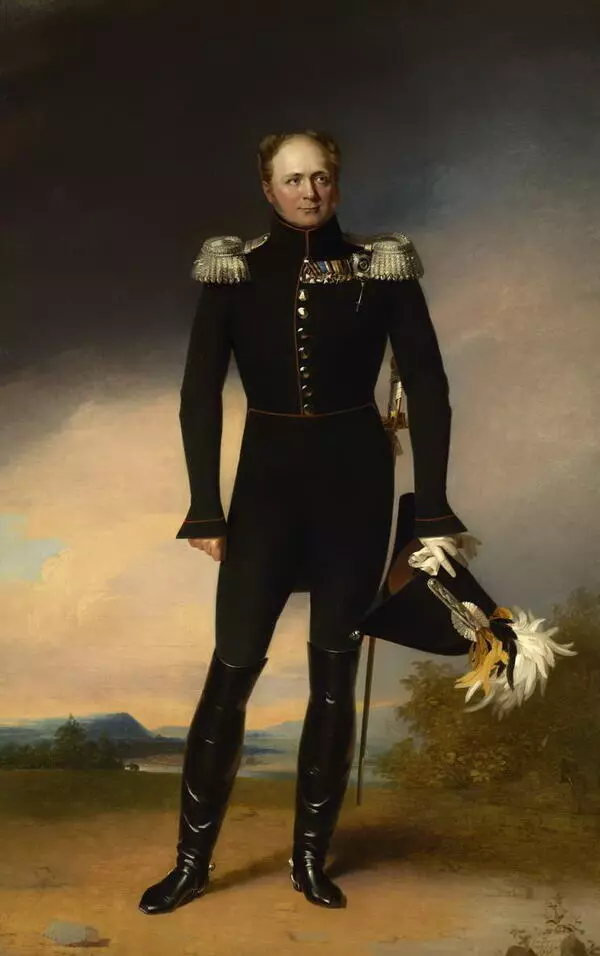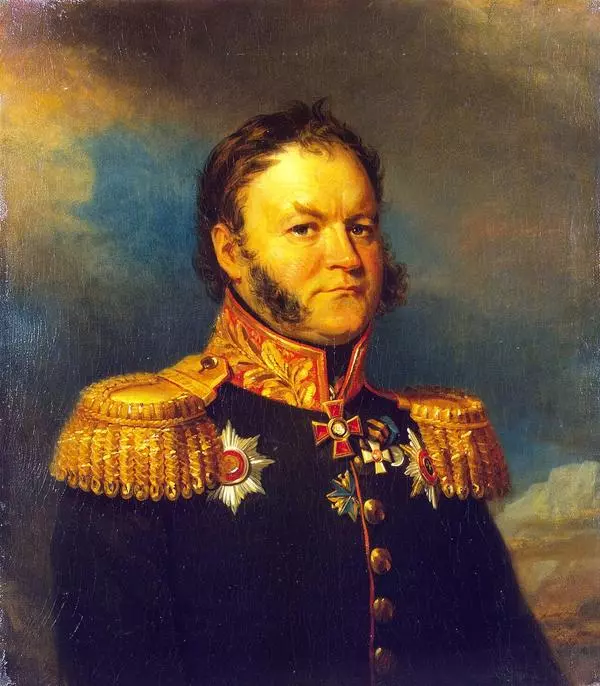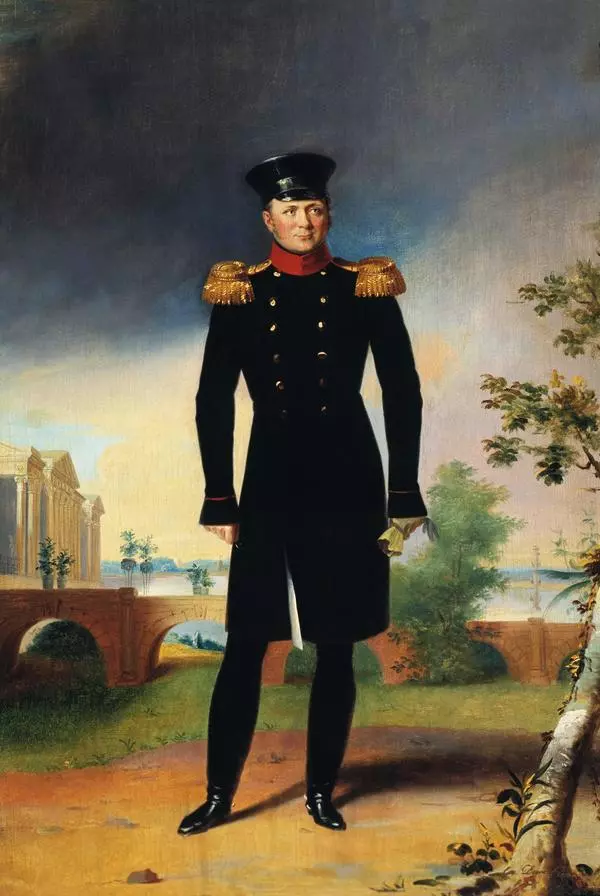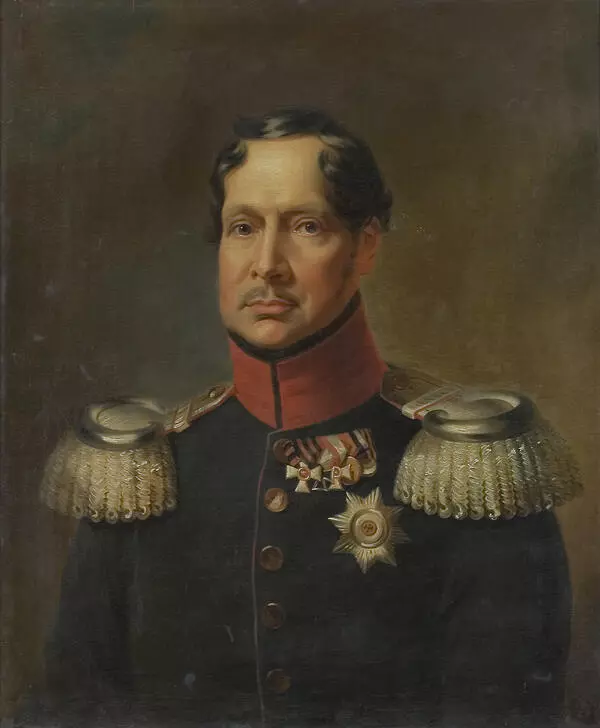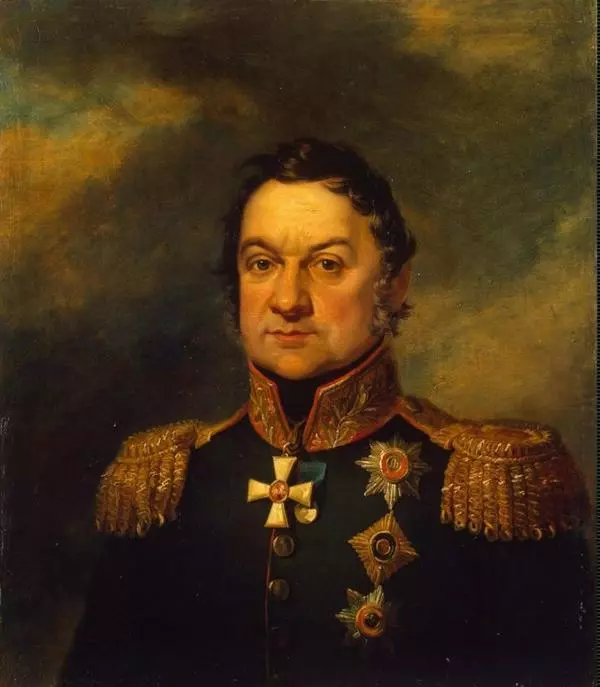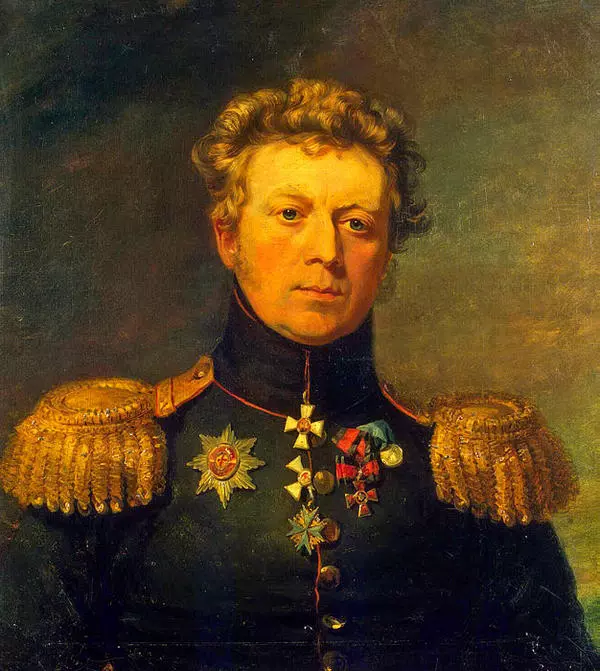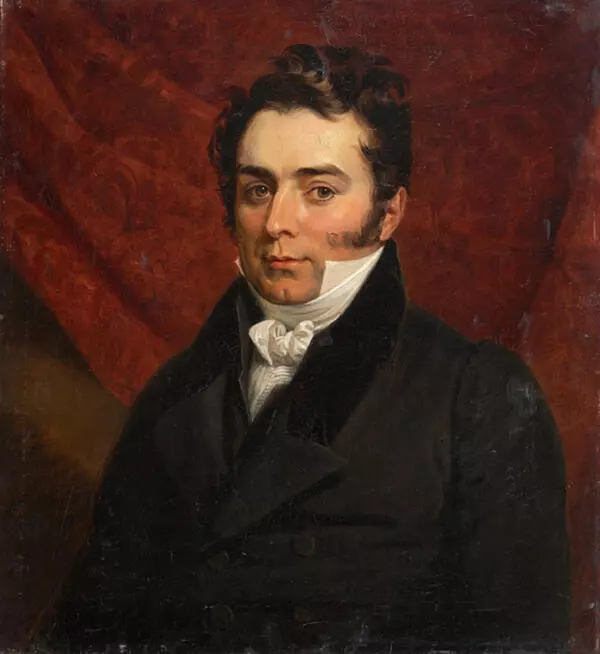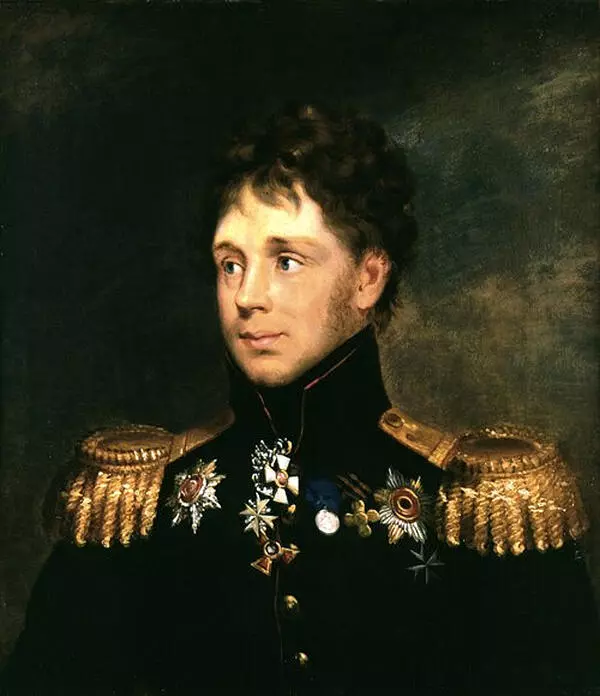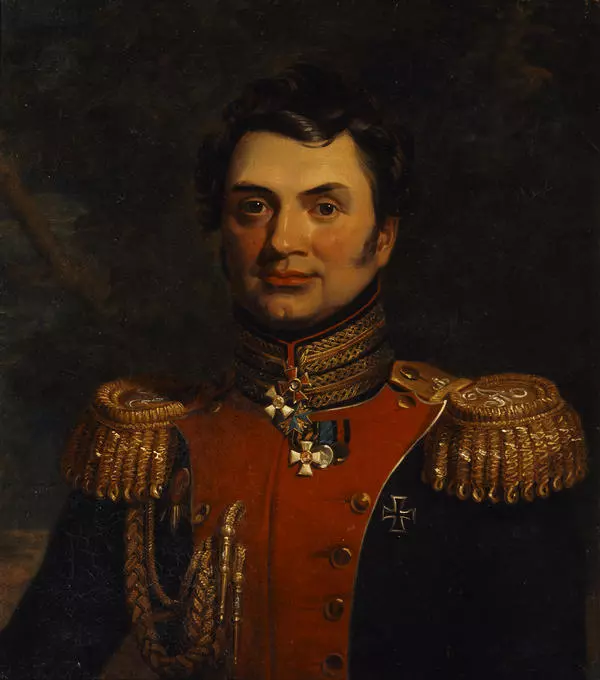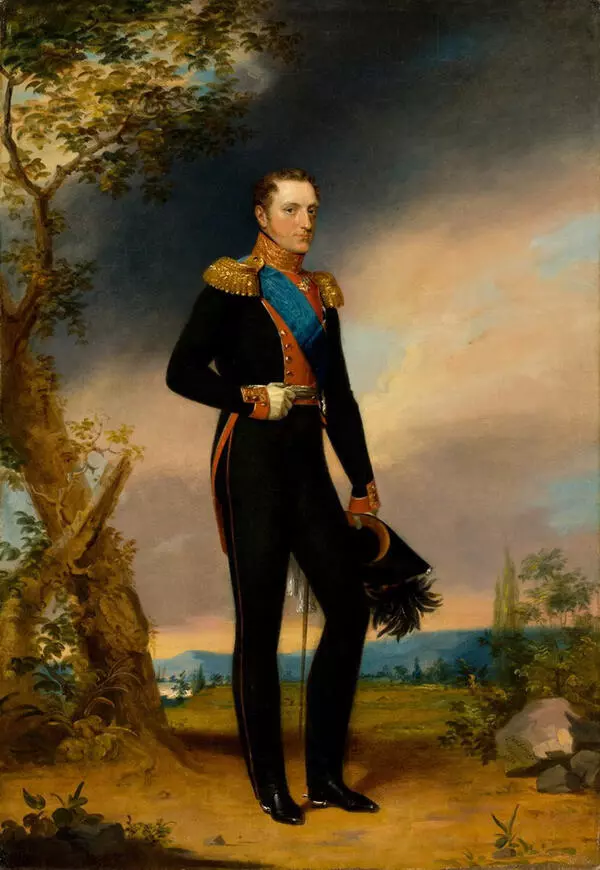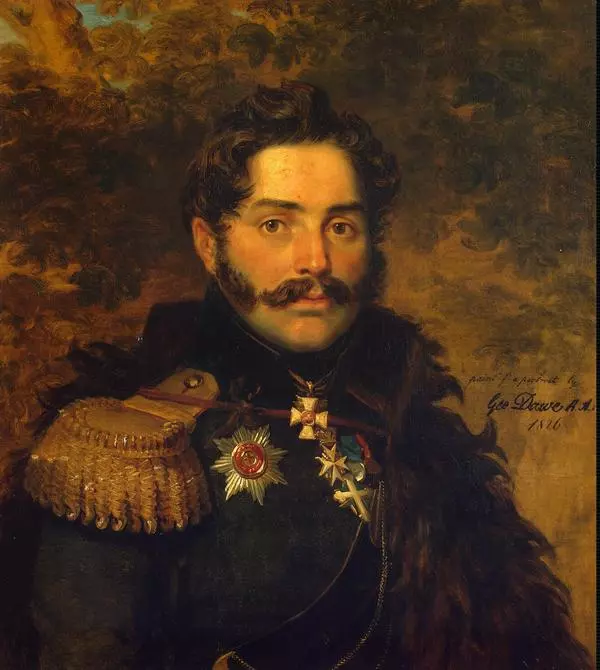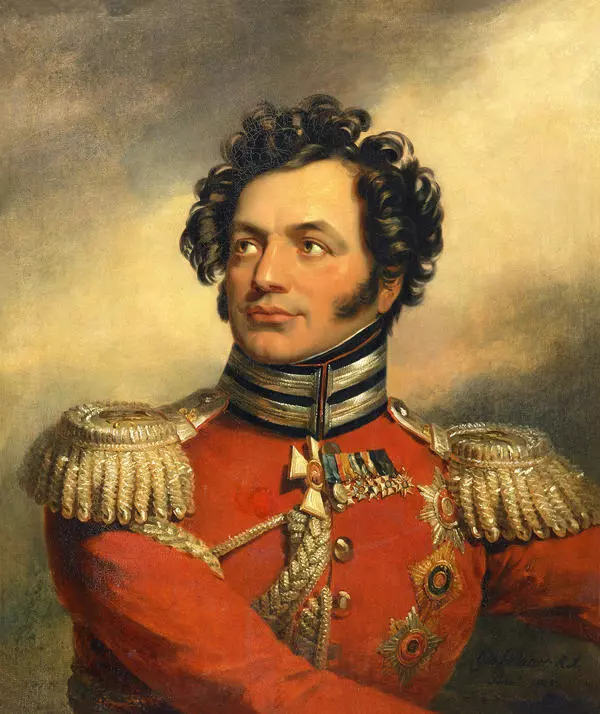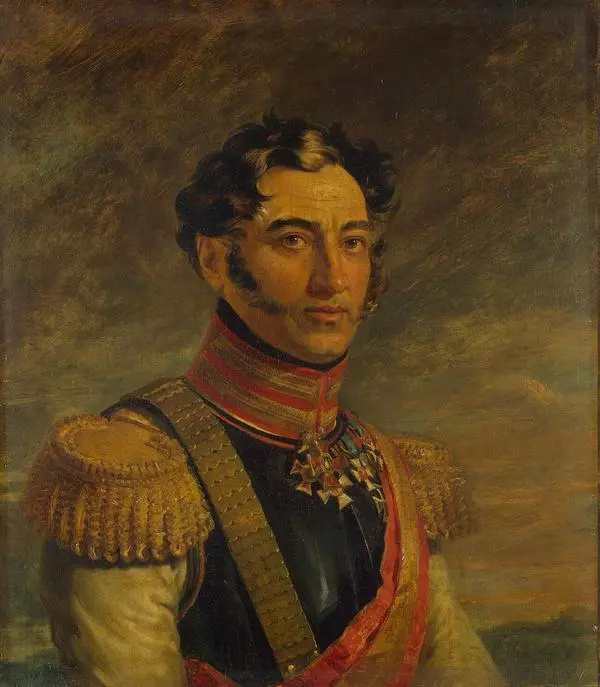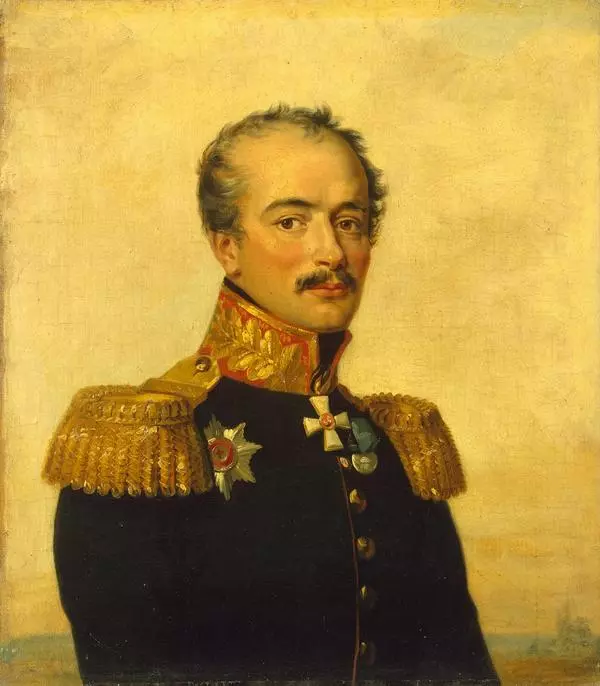This work by George Dawe is a portrait of the outstanding Russian general Alexei Petrovich Ermolov. This canvas is one of the paintings created specifically for the Military Gallery of the Winter Palace. The military leader is depicted side-on against the backdrop of a mountain landscape. There are awards on the general’s uniform: the Order of St. George of the 2nd Class and the Order of St. Alexander Nevsky, as well as the medal In Memory of the Patriotic War of 1812 on the St. Andrew’s ribbon. The canvas was painted in St. Petersburg in 1825.
Alexei Petrovich Ermolov (1777-1861) is known in history as an outstanding Russian military leader, a prominent statesman and diplomat. He took an active part in many large military campaigns undertaken by the Russian Empire from 1790 to 1820. He served as an infantry general in 1818 and commanded artillery in 1837. He showed himself as the Chief Manager of the civil unit and border troops in Georgia, Caucasus and Astrakhan provinces, and headed the Separate Georgian Corps.
Alexei Ermolov was born in Moscow, but his origin goes back to an old, rather poor noble family from the Orel province. In his infancy, the boy was assigned to the Preobrazhensky regiment, which was quite in the spirit of the traditions of that time. Ermolov received education in a boarding school of the Moscow University. In 1792, he already had the rank of captain and was sent to serve in the Nizhny Novgorod Dragoon Regiment as an adjutant to the Attorney General Count A.N. Samoilov.
Unsatisfied with the staff service, the young nobleman was transferred to artillery, where he was entrusted with the training of the cadets. However, Ermolov found teaching not very inspiring as well. In 1794, he was transferred to combat units and took part in the war with Poland. He immediately manifested himself as a talented commander, and for the assault on Prague he received the Order of St. George of 4th class from the hands of Suvorov himself.
With the beginning of the Patriotic War of 1812, A.P. Ermolov was appointed chief of staff at the 1st Western Army of Barclay de Tolly. Throughout the war, he manifested himself as a talented military leader. In the battle of Borodino, Ermolov participated under the command of Kutuzov. For this battle, he received the Order of St. Anne of the 1st Class, and for the battle of Zabolotye he was promoted to the rank of lieutenant general. Following the results of the campaign of 1813-1814, he added to his awards the Order of St. Alexander Nevsky and the Order of St. George of the 2nd Class.
Upon returning to Russia, Ermolov received the position of commander of the Georgian Corps. In 1818, he was promoted to the rank of general of infantry. He also was an ambassador to Persia. Thanks to his many victories during the pacification of the Caucasus, Ermolov inspired terror into the mountaineers and became a truly legendary person. He defended part of the eastern coast of the Black Sea, resolutely suppressed the uprisings of mountain peoples, and brought Dagestan under Russia.
Ermolov died on April 21, 1861 in Moscow, and was buried in the homeland of his ancestors, Orel, in the church of the Trinity cemetery. The commander was depicted in many paintings, including this canvas by George Dawe.
Alexei Petrovich Ermolov (1777-1861) is known in history as an outstanding Russian military leader, a prominent statesman and diplomat. He took an active part in many large military campaigns undertaken by the Russian Empire from 1790 to 1820. He served as an infantry general in 1818 and commanded artillery in 1837. He showed himself as the Chief Manager of the civil unit and border troops in Georgia, Caucasus and Astrakhan provinces, and headed the Separate Georgian Corps.
Alexei Ermolov was born in Moscow, but his origin goes back to an old, rather poor noble family from the Orel province. In his infancy, the boy was assigned to the Preobrazhensky regiment, which was quite in the spirit of the traditions of that time. Ermolov received education in a boarding school of the Moscow University. In 1792, he already had the rank of captain and was sent to serve in the Nizhny Novgorod Dragoon Regiment as an adjutant to the Attorney General Count A.N. Samoilov.
Unsatisfied with the staff service, the young nobleman was transferred to artillery, where he was entrusted with the training of the cadets. However, Ermolov found teaching not very inspiring as well. In 1794, he was transferred to combat units and took part in the war with Poland. He immediately manifested himself as a talented commander, and for the assault on Prague he received the Order of St. George of 4th class from the hands of Suvorov himself.
With the beginning of the Patriotic War of 1812, A.P. Ermolov was appointed chief of staff at the 1st Western Army of Barclay de Tolly. Throughout the war, he manifested himself as a talented military leader. In the battle of Borodino, Ermolov participated under the command of Kutuzov. For this battle, he received the Order of St. Anne of the 1st Class, and for the battle of Zabolotye he was promoted to the rank of lieutenant general. Following the results of the campaign of 1813-1814, he added to his awards the Order of St. Alexander Nevsky and the Order of St. George of the 2nd Class.
Upon returning to Russia, Ermolov received the position of commander of the Georgian Corps. In 1818, he was promoted to the rank of general of infantry. He also was an ambassador to Persia. Thanks to his many victories during the pacification of the Caucasus, Ermolov inspired terror into the mountaineers and became a truly legendary person. He defended part of the eastern coast of the Black Sea, resolutely suppressed the uprisings of mountain peoples, and brought Dagestan under Russia.
Ermolov died on April 21, 1861 in Moscow, and was buried in the homeland of his ancestors, Orel, in the church of the Trinity cemetery. The commander was depicted in many paintings, including this canvas by George Dawe.
